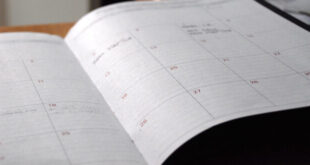By Alissa Johnson
On a Wednesday evening, I returned home from work with a tickle in the back of my throat. When I went to bed, the center of my chest hurt right over the sternum—a slight sensation, but one I’d never felt before. I kept both developments under wraps, not wanting to incite a swift round of home sterilization or admit that I’d failed to stay healthy.
In the age of hand sanitizer and antibacterial soap and the opportunity to work from home, getting sick sometimes feels like just that: a failure. I’d been around someone with a cold and must not have washed my hands properly. Or I didn’t prioritize sleep as I should have, or in some other way failed to prioritize my health.
Wednesday rolled into Thursday and the sensations were still there. I came clean to my partner. He forbade me to enter the kitchen and sterilized the doorknobs and drawer pulls. I worked from home, and we practiced social distancing, leaving the house only to walk the dog and allowing for six feet of space between us and our neighbors.
It may be only a cold, I decided, but I was not going to add to the general cacophony of germs and alarm spreading through the community. This was just days before the county closed nonessential businesses, when journalists still used the term coronavirus instead of COVID-19, and when restaurants decided for themselves whether to stay open.
The next three to four days felt like a week, each day and sometimes every hour bringing new information and regulations. At work we debated via Zoom and text the merits of keeping the public part of the business open and updated our coronavirus policy daily. The minute we finalized one version, it seemed we started the next. Even on Saturday and Sunday, changes came.
The cold I awaited did not. No stuffy nose, no cough, no sore throat and though I told people I was getting better, it was more that I wasn’t getting worse. My lymph nodes were swollen and I could only describe what I felt by telling you what it was not. My throat felt raw, but not like a sore throat. It felt weird to breathe, but not like congestion. It felt how I imagined asthma to be.
“Have you had a fever?” people asked, and when I said no, clearly gave them all they needed to hear to dismiss it as not coronavirus.
By then, I had listened to enough experts to know about asymptomatic cases and cases without high fevers. I became a detective, watching videos and reading accounts by people with confirmed cases, scouring county and state information, and completing ineffective google searches trying to figure out what mild coronavirus looked like.
Without better information, I did the one thing I knew how to do: Slow down. Rest. The world around me seemed to speed up.
In rapid succession, the county and then the state and places like New York City shut down. Practically overnight, friends with kids were learning how to work from home and home school. My college roommate, a teacher in Wisconsin, was being urged to get her online classroom up and running as fast as possible. Another college roommate, an attorney in New York City, had her salary cut in half four days in to the response, and many of her colleagues were fired. Everywhere, I saw urgency—a relentless drive to avoid catastrophe, to find a new normal.
Whatever I had sank into my chest. I was careful to call my symptoms mild, because they didn’t knock me out or land me in the ER or even warrant a trip to the screening site. Just self-isolation.
Half the time I wondered if they were real. I lay in bed and inhaled, trying to measure my diminished capacity to breathe. Questioning whether I really needed to avoid that hill while walking the dog, or whether I always had to catch my breath at the top of the stairs. We do live at altitude.
Maybe my taste buds weren’t affected; maybe that cabbage was bad and lacked flavor. Maybe every single symptom was psychosomatic. As one friend confided, she felt fine till she went outside and saw people—then her throat hurt (though she was later sent to a screening site).
After two and a half weeks, I started to get better. Not in a wake up and realize you’re healed kind of way, but a dawning realization. I walked the dog and had energy left when I got home. I ran up the stairs and could still breathe. I finished a meeting and had the energy to dive right into a project. For three days, I experienced spontaneous moments of giddiness because look what I could do!
Changes came from around me too. People once suspicious of my symptoms were suddenly convinced: I had COVID-19. Their certainty made me less so, and it’s probably I’ll never know. I now spend less time thinking about what I had and more time considering what it taught me: sometimes, you don’t understand what you’re going through until it’s gone.
Failure isn’t being sick or unable to name what’s happening. It doesn’t come in not knowing what to do or how to act fast. It comes, instead, in not admitting that something is wrong. From expecting the experience—and the way you feel inside it—to be normal at all.
It’s okay to admit discomfort. It’s okay to take time to adjust. It’s okay to slow down when everyone else speeds up. For most of us, though we may wish it to be otherwise, there’s no place to rush to after all.
 The Crested Butte News Serving the Gunnison Valley since 1999
The Crested Butte News Serving the Gunnison Valley since 1999


